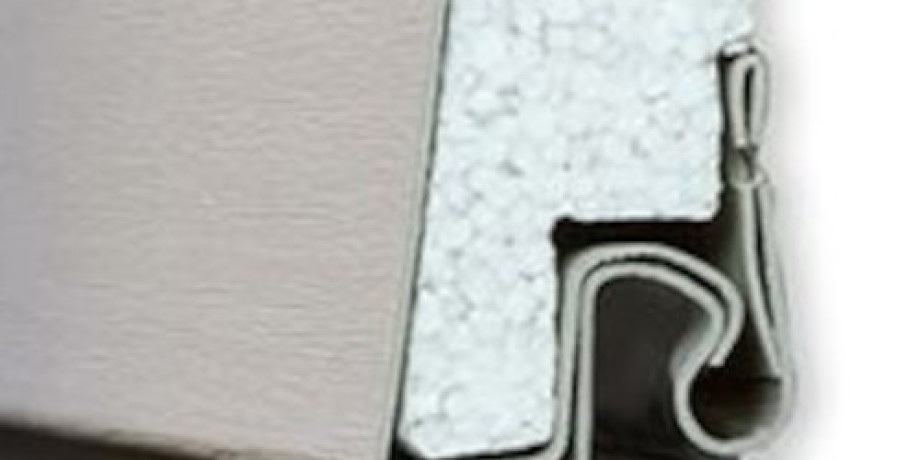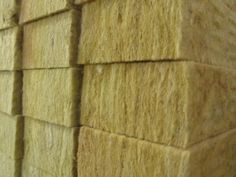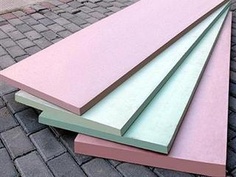Some Facts on Insulated Siding

by Mark Row
Wrap-up Your Home
When building a house, people usually have a few aspects in mind including the stability of the construction, its strength and durability, insulation power and aesthetics. However, taking proper care of each aspect can sometimes be very demanding and expensive why people usually decide to sacrifice one for the sake of the other. This is why it is not an uncommon phenomenon that people end up with a beautiful and aesthetically pleasing exterior, but not as strong and resistant, or get a stabile construction that is however very energy inefficient. Well, what if we tell you that there might be a solution for your problems found in an insulated siding. It is an option that can offer you resistance, aesthetics and proper insulation system thus recognizing all demands of a modern society where energy efficiency has become an imperative for more than one reason.
Basic Siding Classifications
Siding is basically a cladding system or an exterior wrap of your home, consisting of either sheet materials, shingles, horizontal or vertical boards, which are usually properly reinforced in order of resisting the wind and rain by creating an interlocking joint, covering the joint or overlapping. It is available in different types of materials including:
- Wood siding is a traditional choice, since it has many options and can be painted to any color, but is also more subject to exterior effects such as excessive moisture but also insects and termites, why it requires more maintenance than the alternatives and must be treated every four to nine years. On the other hand, depending on the thickness, it offers more insulation than some other materials available.
- Plastic siding (usually available as vinyl or PVC siding) is a cheaper alternative to the wood one, but has suffered many critics over the years due to the limited choice in colors and designs, reduced fire resistance, environmental impact and poor aesthetic. However, when found as an insulated siding (which we will move on to later), it can be much more effective.
- Metal siding is another popular choice due to its modern and industrial appeal. One option can be found in aluminum siding which could be your thing if you are living in a coastal area where there is a high percent of humidity present, since aluminum will not corrode or rust, unlike steel which is often reinforced with some finish, such as zinc.
- Masonry siding has the greatest aesthetic value, since usually used in some calming, earthly tones, thus conforming to any style, from rustic and traditional to more modern one. Its basic advantage is that it is basically maintenance free and extremely durable, but usually very expensive.
Insulated Siding
It is time to move on to some facts on insulated siding. As mentioned, this can help you combine traditional advantages of different types of sidings with all the benefits of insulation, including improved energy efficiency, prolonged life span of the building, added strength and stability, money savings and much more.
This is why the manufacturers came to an idea to simply improve the existing siding options by adding or attaching some insulation material to it. This has been done with vinyl siding that is now available reinforced with expanded polystyrene rigid insulation board attached to the back of the siding so it would fill the space between the siding and the walls of your home, thus providing a barrier for all potential negative effects of the weather.
On the other hand, if you simply want to choose a siding that suits your aesthetic demands better, you do not have to purchase an already insulated siding, but you can simply add some insulation yourself in the construction phase or during some refurbishment project. Since there are many insulation materials that will serve the purpose, you should keep a few things in mind, such as:
- the climate – if your home is located in a more extreme climate region, you will need a superior insulation material that can withstand extreme temperatures or temperature drops, which does not have to be the case with some more moderate climates;
- R value - each insulation material has its own R value that presents its ability to preserve heat that is reduce heat loss.
- fire resistance - if your home is located in and industrial zone or you are adding insulation to your factory siding, it is important to take into account the material’s fire resistance properties;
- moisture resistance - note that your insulation material must allow the entire construction to freely breathe that is to get rid of the excessive moisture instead of trapping it within the structure. This especially goes for your insulation material that must not be subject to humidity and damp.
If you have taken into consideration all the named factors, you can finally make your choice when adding insulation to your home siding. You can choose traditional blanket insulation, such as rock or glass wool insulation which is usually found in walls and roofs and can easily be installed behind the siding. Another valuable siding insulation option are rigid insulation boards which are probably among the most effective insulation materials, have high R values and are especially designed to easily fit any flat surface, such as your walls. Finally, you can opt for some type of blown-in insulation which is the perfect choice for narrow and hollow spaces, like cavities and crawl spaces, doe to the fact that it can simply be spread through a small hole in your wall but should be installed by a professional.


And now, a few extra tips in order of successfully finalizing your siding insulation project. Even when purchasing and installing siding, it is very important to take its thickness into account. The reason is quite simple, since the thicker the siding, the more insulation you will get. Another thing worth mentioning is the siding installation process. Always make sure that the siding is firmly attached to the walls by using strong joists which will offer a better protection from negative effects of the wind and moisture slipping in.
Choose insulation products from our wide seletion of insulation materials for your home improvement project, or seek advice from our experts. You are welcome to leave a comment or share the article.



























































































































